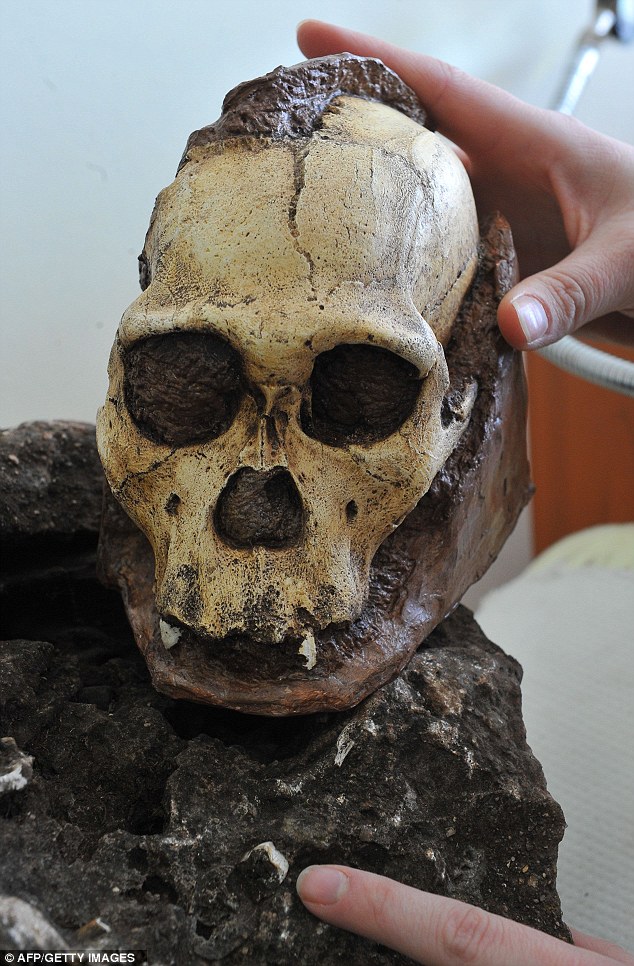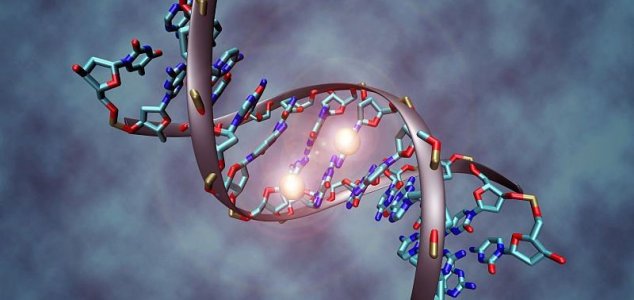
For two million years the rock lay undisturbed, containing a hidden secret and perhaps one of the most important archeological finds ever.
For another few years, the rock lay undisturbed in a laboratory, until a technician noticed a tooth sticking out of the back.
Opening it up, the South African scientists discovered what they call the most complete skeleton yet of an ancient relative of man, hidden in the rock which was first excavated from an archaeological site three years ago.
University of Witwatersrand palaeontologist Lee Berger said the remains of the juvenile hominid skeleton, of the ‘Australopithecus sediba’ species, constitute the ‘most complete early human ancestor skeleton ever discovered.’
South African scientists said Thursday they had uncovered the most complete skeleton yet of an ancient relative of man, hidden in a rock excavated from an archaeological site three years ago.

The remains are thought to be around two million years old, and add a few years for the time that the three-foot-wide rock lay unnoticed in the laboratory.
The technician, Justin Mukanka, said: ‘I was lifting the block up, I just realized that there is a tooth.’
It was then scanned to reveal significant parts of an A. sediba skeleton, dubbed Karabo, whose other other parts were first discovered in 2009.
The remains of a juvenile hominid skeleton, of the Australopithecus (southern ape) sediba species, constitute the “most complete early human ancestor skeleton ever discovered,” according to University of Witwatersrand palaeontologist Lee Berger.
“We have discovered parts of a jaw and critical aspects of the body including what appear to be a complete femur (thigh bone), ribs, vertebrae and other important limb elements, some never before seen in such completeness in the human fossil record,” said Berger, a lead professor in the finding.
The latest discovery of what is thought to be around two million years old, was made in a one-metre (three-foot) wide rock that lay unnoticed for years in a laboratory until a technician noticed a tooth sticking out of the black stone last month.
The technician, Justin Mukanka, said: “I was lifting the block up, I just realized that there is a tooth.”
It was then scanned to reveal significant parts of an A. sediba skeleton, dubbed Karabo, whose other other parts were first discovered in 2009. Parts of three other skeletons were discovered in 2008 in the world-famous Cradle of Humankind site north of Johannesburg.
It is not certain whether the species, which had long arms, a small brain and a thumb possibly used for precision gripping, was a direct ancestor of humans’ genus, Homo, or simply a close relative.
Originally posted 2016-03-06 00:28:51. Republished by Blog Post Promoter

![early-skull[1]](https://coolinterestingnews.com/wp-content/uploads/2016/03/early-skull1.jpg)












